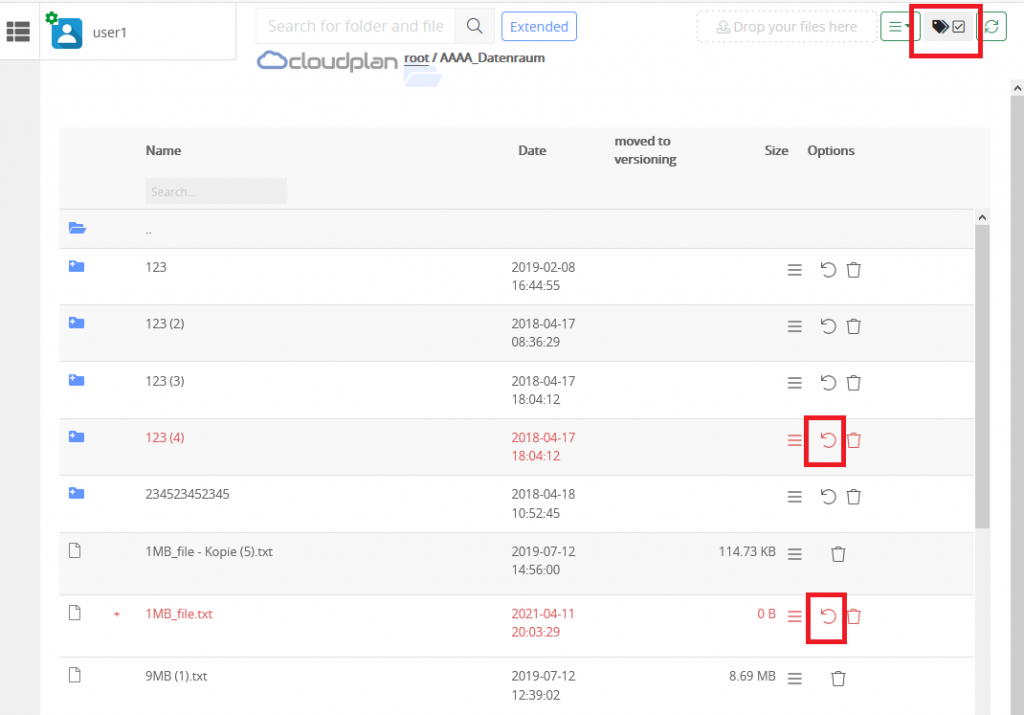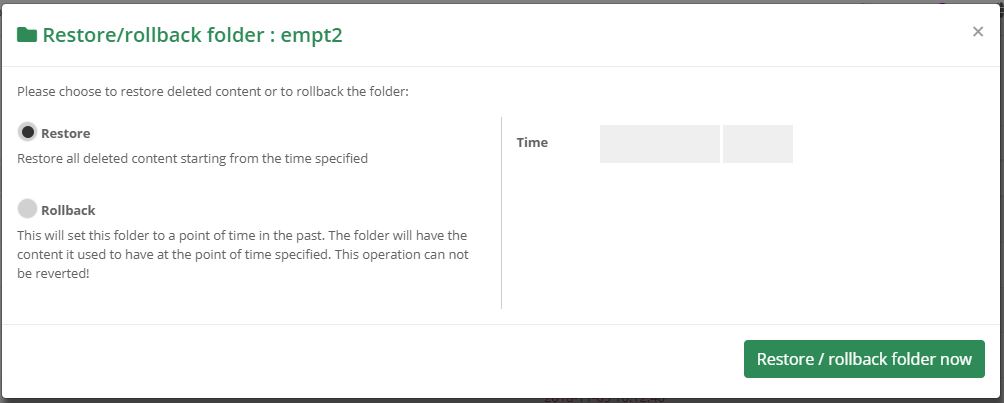Knowledge Base
Versioning, Restore & Rollback
Restore & Rollback can be used when at least one of your storage nodes has “versioning” switched on which requires an “enterprise” or “enterprise pro” license. Versions will not be created if you modify or delete content on the versioning server itself. Therefore, the versioning server shall only be used for versioning and should have a lower priority (node level) than the servers used for user access.
Restore
Deleted folders
Restore will bring back the folder with sub content.
Deleted files
You can restore the last or any other available and deleted file version. Click on the “+” that is shown when more than one version is available and select between 2 restore options:
Restore & overwrite: The last deleted file version ID will be used when you restore this file. This is important to decide, since there could be existing weblinks that will start working again when the last ID is used to restore this file version.
Restore & create new file: A new file ID is used to restore the file. Older weblinks with the same filename will not work!
Existing files
Restore & overwrite: the newest and existing file version will be overwritten with the version selected. The version that is overwritten will be moved to versioning and could be restored at a later date.
Restore & create new file: a new file is created. This file will be renamed to the old name with the addition of the version number.
Existing folders
Restore: All deleted files will be restored starting from the date specified until current time.
Rollback
This feature requires special attention because it can not be undone. The following actions will be executed:
- All files that were deleted after the specified date will be restored.
- All files created after the specified date will be deleted.
- Files that have been changed after the specified date will be swapped to the file version created before that date.


